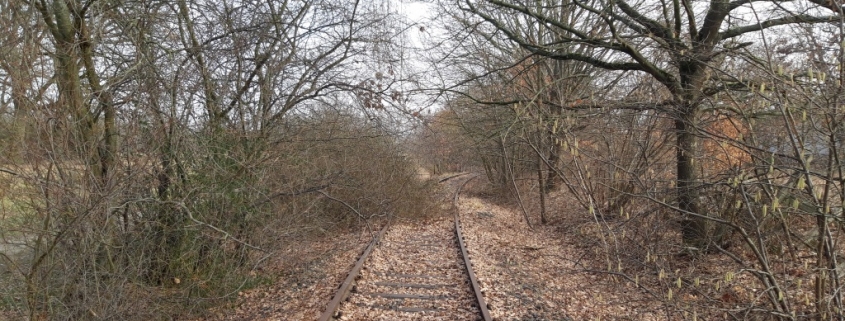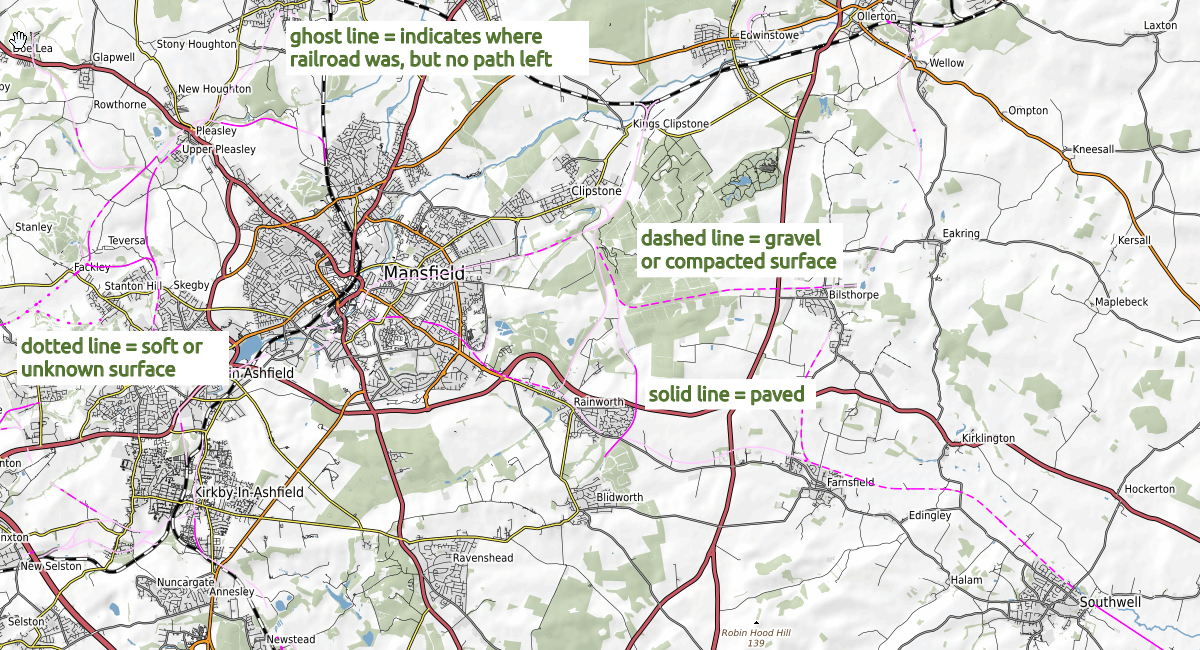Many people think cycling on abandoned railways is the most relaxing. Beside some annoying details like posts and barriers on street crossings they often combine low traffic, beautiful scenery, moderate inclines and smooth routes. It’s very remarkable that more and more cycleways are constructed on these old railroads, many of them with excellent pavement.
I decided to add the option of highlighting them to the singletrails.com maps, so you can consider them when planning a route. Although the site is still under construction you can already review the result on the map prototype. To do so you have to activate the “abandoned railways” layer in the layer selection control on the upper right corner.
Display of cycling routes on abandoned railways
To make the state of the abandoned railways distinguishable I have used the following line types.
Paved and hard surface (roadbike)
The way is paved or has another type of hard surface. This may include also pebblestones or cement plates. As my experience shows that you do not encounter these often on abandoned railroads I have decided not to display them differently. Such a way therefore should be fine for a roadbike ride.
Gravel and compacted surface (gravel bike)
This way is well suited to go by gravel bike or cross bike. I wouldn’t recommend to ride it with a roadbike, unless you are the more adventurous type.
Smooth or unknown surface
This can be anything: loose surface, grass or sand. But also all tracks and paths without explicit surface information are shown like this. A mountain bike here is definitely the best choice.
Abandoned railway (no path)
At this position there is no way or path at all. I decided to show where the original railway want anyway, as I regularly found myself investigating the gaps in the displayed routes. Maybe someone just forgot the tagging. These lines also gives you an idea how many old railways still wait to be discovered.
Using the example of Mansfield the result is as follows:
Tagging in OpenStreetMap
The display is based on the information from OpenStreetMap. In a previous post I have demonstrated how to view and update this information.
In general everything related to railways is tagged by the railway attribute. Railway lines, that are no longer in use, have one of the values “abandoned” or “disused”. The difference between both is that with “abandoned” the rails have already been dismounted, whereas they are still in place with “disused”.
To categorize such an abandoned railway as a cycleable way the highway attribute needs to have a suitable value (e.g. “cycleway”, “path” or “service”). For those highway types where you cannot be sure if cycling is allowed (e.g. “footway”, “bridleway”) this has to be specified in addition via the bicycle attribute. Typically if cycling is allowed the value is one of “yes” or “designated”.
For which bike type a way is suitable is mostly determined by the surface attribute. In general in OpenStreetMap the surface grade could be specified even better with the smoothness attribute, e.g. as “excellent”, “good” or “bad”. As I found these information is very rare I decided not to use it to make a further distinction between surface types.




Leave a Reply
Want to join the discussion?Feel free to contribute!